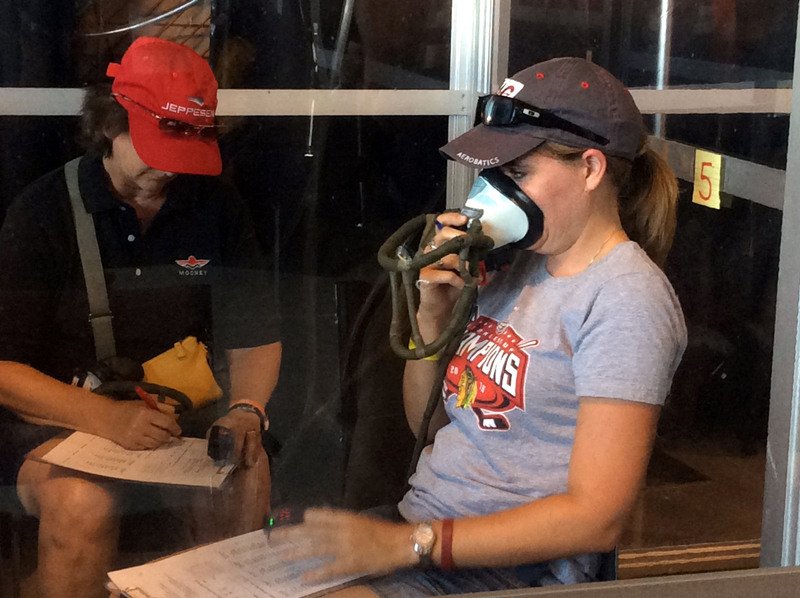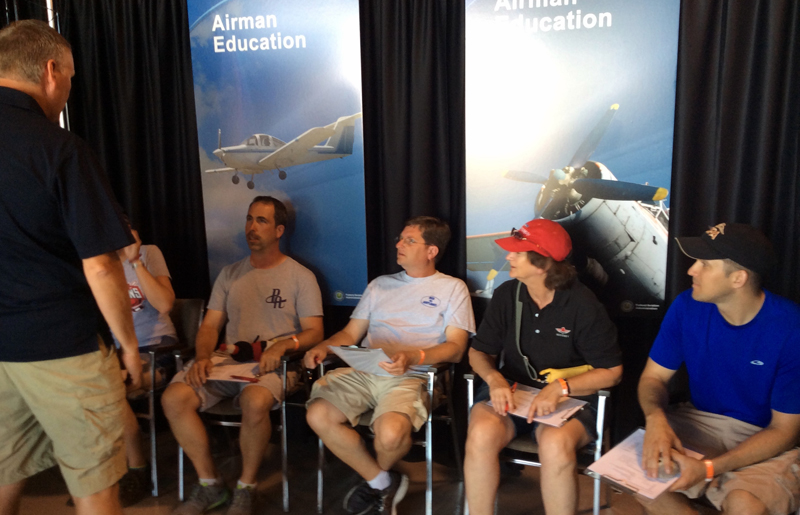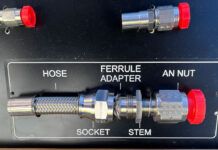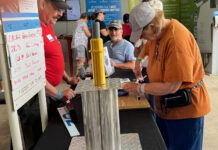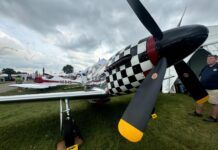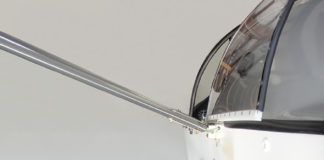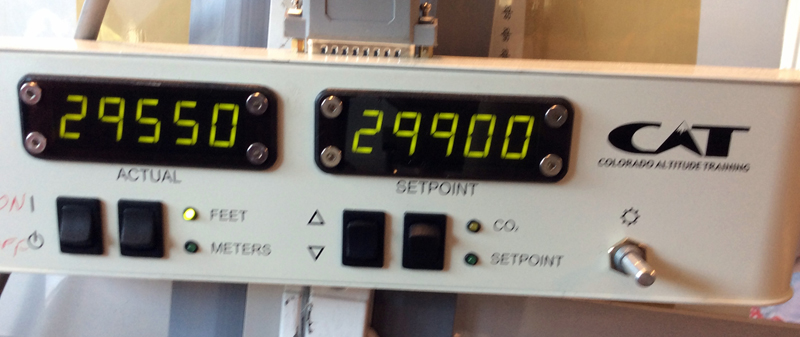
The FAA Aviation Physiology group came to AirVenture with a very cool new “experiential” teaching device—a normobaric hypoxia training chamber. Every half-hour from 9 to 5 through the end of Oshkosh, the team will put up to five licensed pilots with a current Class III medical certificate or higher and 18 years of age or older through an abbreviated form of their high altitude training in their PROTE (portable reduced oxygen training enclosure). Although designed mostly for recurrent training, the FAA staff told me that most pilots this week, including me, have had their first hypoxia training experience here at AirVenture.
A normobaric chamber differs from a more thorough hypobaric chamber as the ambient air pressure is the same as outside the chamber. An elevation of over 29,000 feet MSL (a little higher than Mount Everest) is simulated by lowering the partial pressure of atmospheric oxygen to 7% (normally 21%) and replacing it with nitrogen. The exercise allows the participant to experience hypoxia without the potentially much more dangerous reactions to decompression.

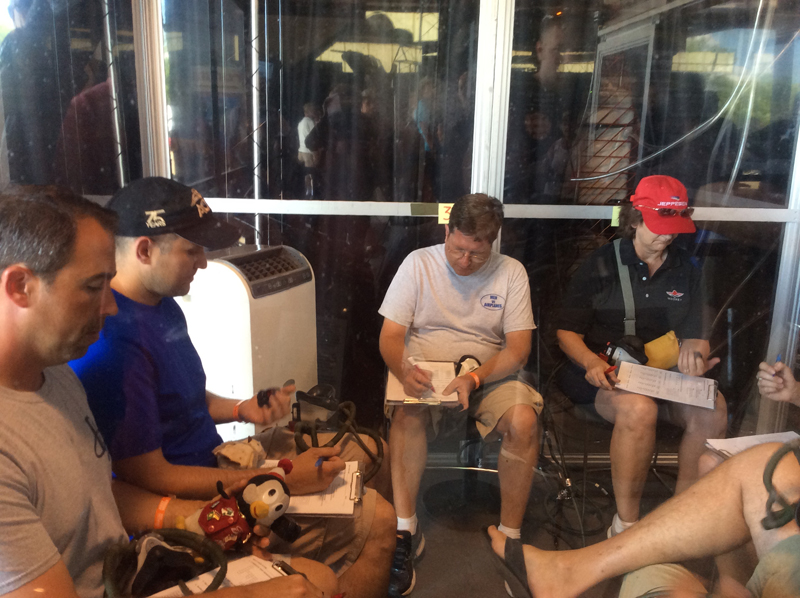
The process begins with a brief screening of participants to eliminate folks with active respiratory problems and recent SCUBA, alcohol, or blood donation experiences. The trainer then provides a briefing, explaining what one should expect. The crew then enters a small outer room that is just barely large enough for the five participants and one FAA monitor. After closing the outer door, the group enters the inner chamber and sits down. We wore inexpensive, fingertip pulse-oximeters on our non-writing hand and kept an oxygen mask in our laps. An FAA monitor outside the chamber monitored the O2 partial pressure and the time. Participants filled out a worksheet of math, crossword, and maze problems. At the end of each minute, the participants wrote down their oxygen saturation level and the symptoms that they felt. We were instructed to put the oxygen mask on (and keep it on) if our oxygen saturation level dropped to 60% or we felt four or more symptoms. Most participants need the oxygen well before the end of the five minute run. During the last (fifth) minutes, the monitor asked the two participants in our group who hadn’t yet felt the need for oxygen to perform simple tactile, visual, and mental tasks to test them a bit more. At the end of five minutes, everyone put their oxygen masks. Once recovered, the group exits the chamber and goes through a debrief, reviewing what symptoms marked the individual’s initial reaction to hypoxia and what problems the monitor observed that the participants may have recognized or remembered.
The word isn’t really out yet and I was able to sign up at the FAA Pavillon (next to the tower) and take the training just a half-hour later. The class following mine wasn’t even full. This training is a hidden gem of an opportunity that is bound to grow rapidly in popularity.
